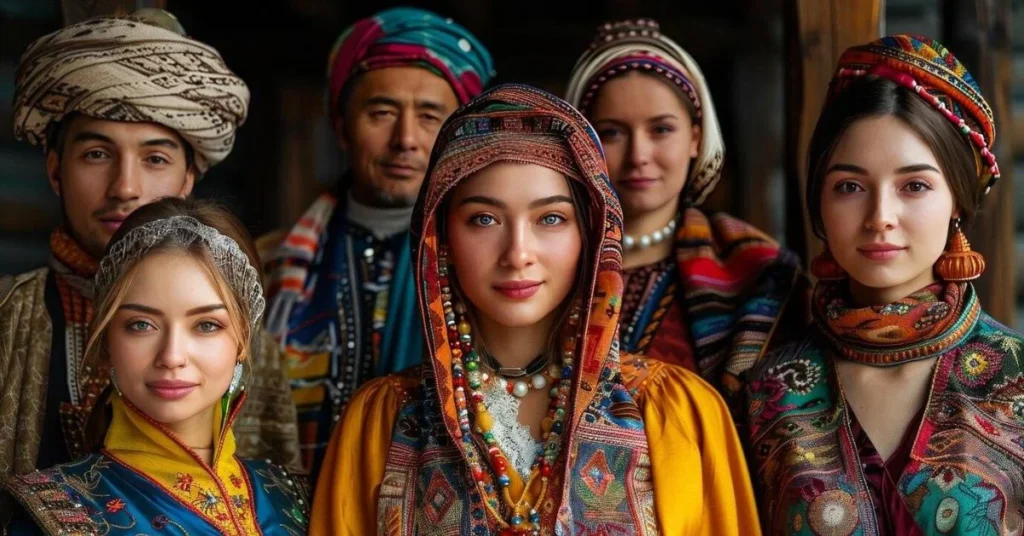Introduction to the Amaziğ Culture
North Africa is a land of rich history and diverse cultures, but one of its most vibrant threads often goes unnoticed: the Amaziğ people. These indigenous inhabitants have woven their unique identity into the fabric of the region with their colorful traditions, captivating stories, and deep-rooted beliefs. The Amaziğ culture, also known as Berber culture, holds a treasure trove of wisdom that reflects resilience and connection to nature. As we explore this enchanting world, prepare to be inspired by tales from ancient times to modern-day struggles for cultural preservation. Join us on an illuminating journey through the heart of North Africa’s Amaziğ heritage!
The History and Origins of the Amaziğ People
The Amaziğ people, often known as Berbers, have inhabited North Africa for thousands of years. Their origins trace back to ancient times, with evidence suggesting they were among the region’s earliest inhabitants.
Linguistic studies reveal that the Amazigh languages belong to a branch of the Afro-Asiatic language family. This rich linguistic heritage reflects their profound connection to the land and its history.
Throughout centuries, these resilient communities adapted to various influences from invading empires and neighboring cultures while maintaining their unique identity. From Romans to Arabs, each encounter shaped their customs and way of life.
Despite external pressures, the Amaziğ culture has thrived in harsh desert landscapes and mountainous regions. Today, they continue to celebrate their traditions through art, music, and oral storytelling—a testament to their enduring legacy within North Africa’s diverse tapestry.
Cultural Traditions and Beliefs of the Amaziğ
The Amaziğ culture is rich in vibrant traditions and deep-rooted beliefs that reflect their connection to the land and community. Music plays a central role, with rhythmic melodies accompanying celebrations, rituals, and storytelling. Instruments like the guembri and bendir bring life to gatherings.
Their art flourishes through intricate woodwork, pottery, and colorful textiles adorned with symbols representing protection and fertility. Each piece tells a story steeped in history.
Spirituality is woven into daily life. The Amaziğ people often practice animism, believing that spirits inhabit natural elements such as rivers or mountains. This reverence for nature fosters a sustainable lifestyle.
Family ties are paramount within their societal structure. Elders hold wisdom passed down through generations, guiding younger members in tradition while instilling values of respect and unity. These cultural practices create an enduring sense of identity among the Amaziġ people today.
ALSO READ: 23azo: Significance in Gaming and Culture
The Influence of Amaziğ Culture on North Africa
The Amaziğ culture has profoundly shaped the identity of North Africa. From architecture to language, their influence is woven into the fabric of daily life.
Berber languages, including Tamazight and Tarifit, enrich the linguistic diversity in countries like Morocco and Algeria. These languages carry ancient stories and traditions that have survived centuries.
Culinary practices are another hallmark of Amaziğ heritage. Tagines, couscous dishes, and herbal teas reflect a rich gastronomic tradition passed down through generations.
Artistry thrives within amaziɣ communities too. Colorful textiles and intricate pottery showcase unique craftsmanship that resonates with both local residents and visitors alike.
Festivals celebrating harvests or historical events bring communities together, preserving communal bonds. Music also plays a significant role; traditional rhythms echo through celebrations and storytelling gatherings across the region.
Such cultural elements continue to inspire contemporary artists while reinforcing ties to ancestral roots in modern society.
Modern Day Challenges and Preservation Efforts
The Amaziğ people face numerous challenges today. Urbanization and globalization threaten their traditional way of life. As cities expand, many young people migrate to find work, leaving rural areas vulnerable.
Cultural erosion is a pressing concern. The rich languages, arts, and customs of the Amaziğ are at risk of fading away. Efforts to revitalize these traditions have gained momentum in recent years.
Grassroots organizations play an essential role in preservation. They promote language education and cultural workshops across North Africa. Festivals celebrating Amaziğ heritage bring communities together, fostering pride among the younger generation.
Collaboration with governments is crucial for sustainable development initiatives that respect indigenous rights. Ecotourism also offers new avenues for economic growth while preserving natural landscapes significant to theAmaziğ culture.
Engaging international partners can amplify these efforts further, ensuring that this vibrant culture continues to thrive amid modern pressures.
ALSO READ: Käöäntäjä: Bridging Cultures with Translation
Must-visit Destinations for Immersing in Amaziğ Culture
To truly experience the richness of Amaziğ culture, certain destinations stand out. One must visit the enchanting village of Imlil in Morocco’s High Atlas Mountains. Nestled among breathtaking peaks, it’s a gateway to traditional Amazigh life.
The vibrant city of Marrakech is another essential stop. The bustling souks and historical sites offer glimpses into Amaziğ artistry and craftsmanship. Be sure to explore the local markets for handmade rugs and pottery crafted by skilled artisans.
Head further south to Essaouira, where coastal beauty meets rich heritage. This UNESCO World Heritage site showcases stunning architecture influenced by Amazigh design.
Venture into Tunisia’s Matmata region. Here lies an extraordinary troglodyte community that reflects ancient traditions still alive today. Each destination tells a unique story about this resilient culture waiting to be discovered.
Conclusion: Appreciating and Respecting Indigenous Cultures
The Amaziğ culture is a vibrant tapestry woven from centuries of history, tradition, and resilience. As we delve deeper into their world, it becomes clear that the richness of this indigenous culture deserves our attention and respect. The values embedded in Amaziğ traditions offer insights into sustainable living and community cohesion.
Understanding the challenges faced by the Amaziğs people today highlights the importance of preservation efforts. These initiatives are crucial not only for maintaining cultural identity but also for fostering appreciation among diverse communities worldwide.
Exploring destinations tied to Amaziğ heritage allows us to engage with their customs firsthand. It opens doors to meaningful interactions that can bridge gaps between cultures.
Recognizing and valuing indigenous cultures like that of the Amaziğ enriches our global narrative. Each unique story adds depth to humanity’s collective experience, reminding us all of the beauty found in diversity and shared histories. Embracing these rich traditions encourages mutual respect and understanding in an increasingly interconnected world.
ALSO READ: Ošice: The Perfect Fusion of Culture and Scenery
FAQs
Q: What is the significance of the Amaziğ culture?
The Amaziğ culture is significant for its rich history, vibrant traditions, and values that promote sustainable living and community cohesion.
Q: Where can I experience Amaziğ heritage?
You can experience Amaziğ heritage by visiting destinations such as Morocco, Algeria, Tunisia, and Libya, where Amaziğ communities reside.
Q: What challenges do the Amaziğ people face today?
The Amaziğ people face challenges such as cultural marginalization, loss of traditional practices, and land rights disputes in modern society.
Q: How does appreciating indigenous cultures benefit us?
Appreciating indigenous cultures like that of the Amaziğ enriches our global narrative and encourages mutual respect and understanding among diverse communities.
Q: How can I show respect for the Amaziğ culture?
You can show respect for the Amaziğ culture by learning about their traditions, supporting preservation efforts, and engaging in meaningful interactions with community members when visiting their destinations.







